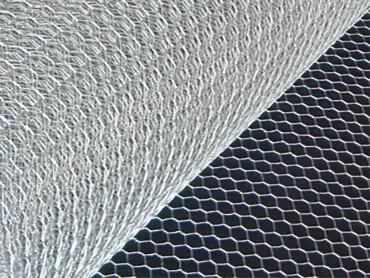ธ.ค. . 16, 2024 18:45 Back to list
modern barbed wire
The Evolution and Impact of Modern Barbed Wire
Barbed wire, an essential element of modern fencing and agriculture, has a rich history that intertwines with the development of rural farmland, livestock management, and even warfare. Its inception in the late 19th century marked a turning point in the way property boundaries were managed and agricultural practices were conducted. This article delves into the evolution of modern barbed wire, its various uses, and its impact on society.
The story of barbed wire begins in 1867 when Lucien B. Smith, an inventor from Ohio, patented the first version. His design was simple yet effective, featuring sharp barbs spaced evenly along a twisted wire. This innovation addressed the pressing need for a cost-effective and efficient way to contain livestock and delineate property lines in the expansive American West, where traditional fencing materials like wood and stone were scarce and costly.
The widespread adoption of barbed wire transformed the landscape of the American frontier. Ranchers could enclose vast tracts of land, effectively managing their cattle with minimal cost and effort. The introduction of barbed wire fences also led to significant changes in land-use practices; as ranchers could now easily control grazing, it facilitated the growth of agriculture, changing the economy of the west and contributing to rapid expansion.
However, the introduction of barbed wire was not without its controversies. With land disputes rife in an era defined by westward expansion, barbed wire soon became a symbol of conflict. Cattle barons and small farmers clashed over land access, leading to legal battles and even violent confrontations. One of the most notable events was the Range Wars, where competing interests in land and resources often led to bloodshed. Barbed wire not only acted as a physical barrier but also ignited social tensions that echoed throughout the settlements in the West.
modern barbed wire

As the 19th century progressed, various improvements and innovations were made to barbed wire technology. The introduction of stronger materials and more intricate bar designs increased its effectiveness. By the early 20th century, barbed wire had become standard in military applications as well. It was used to fortify trenches during World War I, serving as a protective barrier against enemy troops and contributing to the brutal nature of trench warfare. The evolution of barbed wire thus extended beyond agriculture; it became intertwined with military strategies and the horrors of conflict.
In contemporary society, barbed wire continues to serve multifaceted roles. It is employed not only in agriculture but also in securing properties, prisons, and borders. Modern applications have seen barbed wire evolve into razor wire and concertina wire, designed for heightened security. These variations are particularly effective in deterring intruders, serving as a critical component of perimeter security systems worldwide.
Despite its utilitarian benefits, barbed wire has also gained a controversial reputation. In recent years, it has come to symbolize boundaries and exclusion. The use of barbed wire in border enforcement has sparked debates over immigration policies and human rights. As nations grapple with issues of sovereignty and safety, barbed wire serves as both a physical and ideological barrier, raising questions about freedom and access.
In conclusion, the history of modern barbed wire is a testament to human ingenuity and the complexities of societal development. From its origins as a simple agricultural tool to its role in military and contemporary security contexts, barbed wire encapsulates a myriad of themes, including conflict, control, and exclusion. As we move forward, it is essential to recognize the implications of such technologies, as they continue to shape our landscape and society in both tangible and intangible ways. Ultimately, the legacy of barbed wire serves as a reminder of the intricate relationship between technology and humanity, reflecting our ongoing struggle with boundaries—both physical and ideological.
-
The Role of Field Wire Fence in Grassland Conservation
NewsJul.15,2025
-
Stainless Steel Razor Wire Durability in Coastal Environments
NewsJul.15,2025
-
Enhancing Home Security with Mesh Fences
NewsJul.15,2025
-
Diamond Mesh Wire for Small Animal Enclosures
NewsJul.15,2025
-
Common Wire Nail Tensile Strength Testing for Woodworking
NewsJul.15,2025
-
Barbed Wire Corrosion Resistance Galvanization Techniques
NewsJul.15,2025









